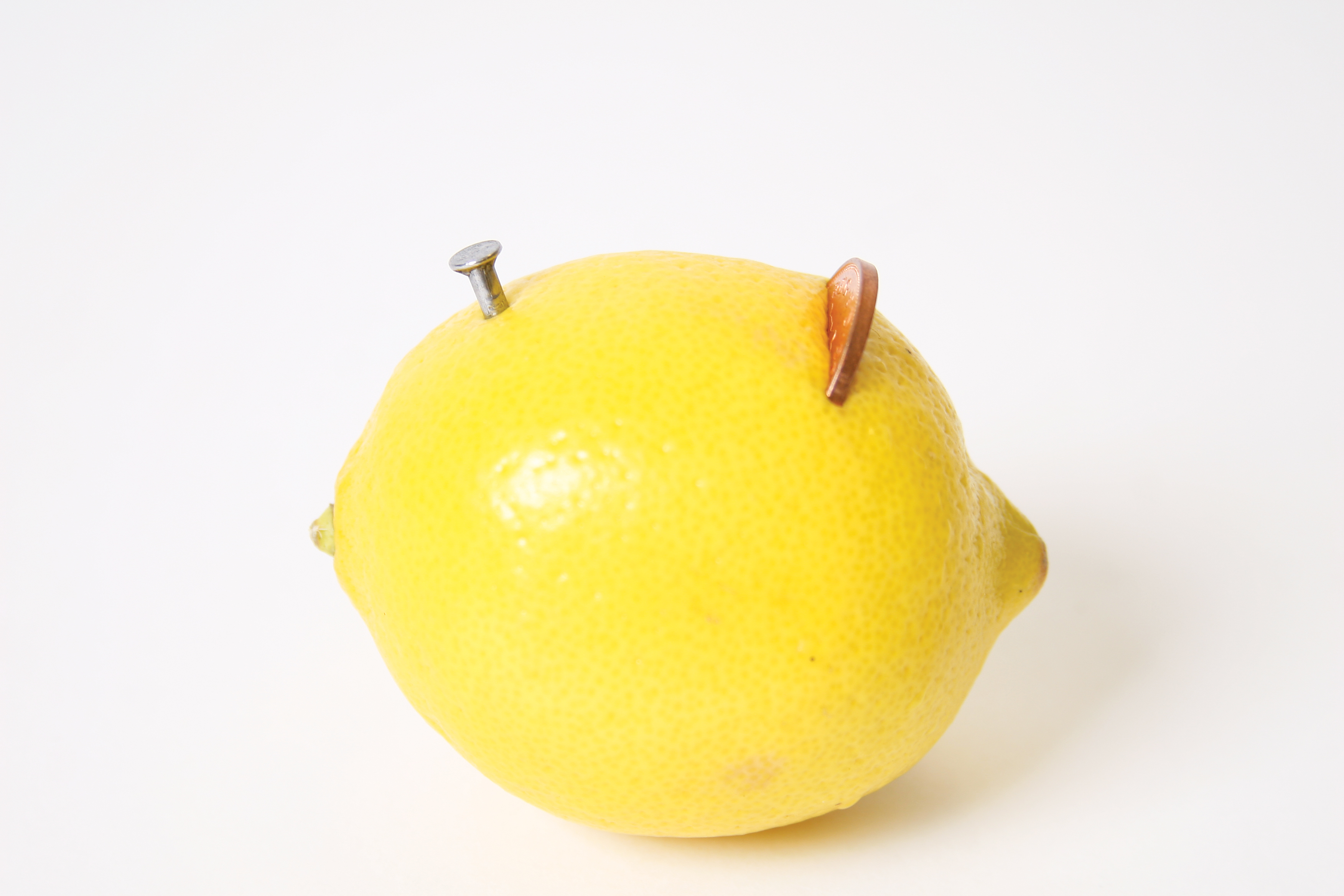Batteries are now an integral part of modern society. They work by encasing a positively charged electrode (cathode) and negatively charged electrode (anode) within an electrolyte solution that, when completed in a circuit via a load (an electrical appliance), cause the cathode to experience an oxidation reaction. This involves multiple ions from the electrolyte solution combining with the cathode, which produces a compound and releases one or more electrons. These electrons are then absorbed by the anode, producing electricity.
This may sound complicated, but the same reaction can be achieved with lemons. A lemon’s acidic content acts in the same way as an electrolyte solution. As such, when a positive and negative electrode are inserted into it (for example, a copper penny and galvanised nail), the lemon’s electrically conducting insides initialise the same oxidising process, freeing electrons and generating a little electricity.
Due to the impurities of both the electrodes (pennies commonly are not 100 per cent copper) as well as the relatively weak acidity of the lemon, only a small amount of electrical potential difference can be generated. However, by combining four lemons you can produce a multi-cell battery that is capable of powering a small LED.
What you’ll need:
1 multimeter
4 lemons
4 copper pennies
4 galvanised nails
5 crocodile clipped copper wire
1 LED
Step 1

First, take a lemon and insert both a copper coin and galvanised nail into its top left and right as depicted here. Ensure that both items penetrate the skin as deeply as possible, while retaining a graspable surface area above the surface. In addition, ensure that the coin and nail do not come into contact within the lemon. When this is achieved, repeat the process on each of the remaining lemons.
Step 2

When all four lemons are prepared, line them up in a row. Next, taking three crocodile clipped copper wires, connect each of the lemons to the next from coin to nail. If you have connected them properly you should have something like this. It is important that the wires run from coin to nail, as that way the lemons’ produced power will accumulate to LED- powering levels.
Both the objects stuck into each lemon are acting as electrodes, with the coins serving as positive electrodes and the nails as the negative electrodes. As such, when the nails are oxidised inside the lemons electrons are released. The energy contained within these electrons is what powers the LED, flowing to each lemon’s negative electrode via their acidic internal solutions. By connecting the lemons with copper wire, that energy is accumulated over each lemon and transferred to the LED.
Step 3

If you have a multimeter, now is a good time to utilise it. First, attach the remaining two wires to the remaining unclamped nail and coin located at either end of the lemon lineup. Once this is achieved connect the free ends to the multimeter and take a reading. If you have set up the experiment correctly, the multimeter should give a reading of approximately 3.50 volts.
Step 4

Okay, provided you have a reading around 3.50 volts it’s now time to connect the LED light to your lemon battery. Disconnect your multimeter if you have used one and connect the free clips to the LED’s plus and minus pins. You can determine which is the minus pin by the indent on the side of LED’s plastic casing. Remember as well that the crocodile clip leading from the furthest right-hand coin must connect to the minus pin on the LED, and the plus pin on the LED to the furthest left-hand nail.
Step 5

Upon completing the circuit the LED should light up, powered purely by the lemons’ oxidising effects. If this is the case congratulations, you have created your very own multi-cell lemon battery. Why stop here, however, why not try some variables on the experiment too in order to generate a larger electrochemical reaction? For example, does using a larger nail and penny make a difference to the LED’s luminosity? Does switching the lemons for potatoes have any effect?
Conclusion
So what have we learned here? Batteries, in their simplest form, consist of an anode, cathode and electrically conductive electrolyte solution. Further, their energy comes from an electrochemical oxidation/ reduction process instigated when the battery cell is connected in a circuit to a load. Finally, while everyday batteries such as those found in your television’s remote control are made from pure substances (100 per cent pure metals/salt-based electrolyte pastes), the same electrochemical cells can be crudely replicated using impure substances, such as copper coins, nails and lemons.
Post a Comment